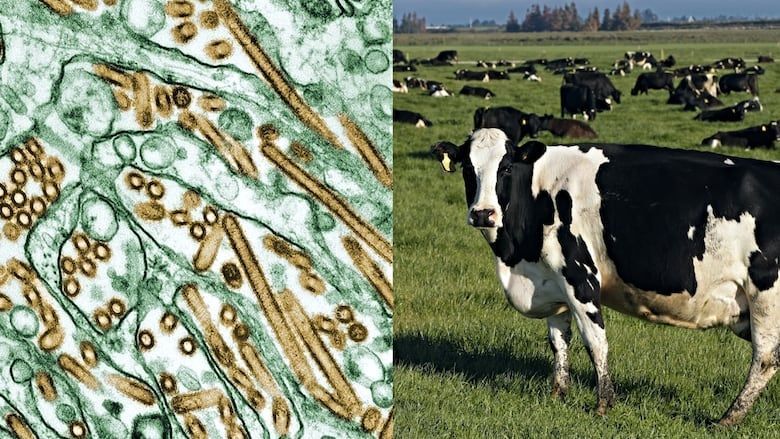New Strain of Bird Flu Found in U.S. Dairy Cattle Sparks Concern

The U.S. Department of Agriculture announced on Wednesday that a strain of bird flu, previously unseen in cows, has been identified in U.S. dairy cattle. This revelation amplifies concerns over the relentless spread of the virus.
The H5N1 virus has already had a significant impact by diminishing milk output in cattle, increasing egg prices due to the death of millions of hens, and infecting nearly 70 people since April across the nation.
The newly discovered strain, identified as the D1.1 genotype, was detected in milk samples from dairy cows in Nevada. This marks the first instance of this particular strain appearing in cattle, the USDA stated. Up until now, the 957 reported bird flu infections in dairy herds since last March were attributed to the B3.13 genotype.
According to the USDA, the D1.1 version has been found in wild birds and previously identified in human cases, including a teenager in British Columbia and a fatality in Louisiana.
This second strain was predominant in wild birds last fall and winter and has also affected poultry. Identified through a milk testing program initiated in December by the USDA, experts believe wild birds likely transmitted the strain to cattle in Nevada, as stated by Nevada's agriculture director, J.J. Goicoechea.
Beth Thompson, South Dakota's state veterinarian, remarked on the adaptability of the virus, noting its migration beyond poultry and wild waterfowl to mammals. This adaptability urges a need for increased precautionary measures by farmers to safeguard livestock.
The Nevada Department of Agriculture placed herds in two counties under quarantine following the detection of bird flu. The USDA emphasized the urgency of containing the outbreak within Nevada to prevent further spread nationwide.
Gail Hansen, a veterinary and public health consultant, underscored the necessity of swift containment measures to avoid recurrence of previous widespread transmission, as seen after infected cattle shipments from Texas.
Experts warn that herds previously infected with the initial strain might be susceptible to reinfection with this new strain. Gregory Gray from the University of Texas Medical Branch highlighted the potential for these novel virus strains to evade existing immunities, attributing an alarming possibility of exacerbated epidemics among animals and wildlife.











